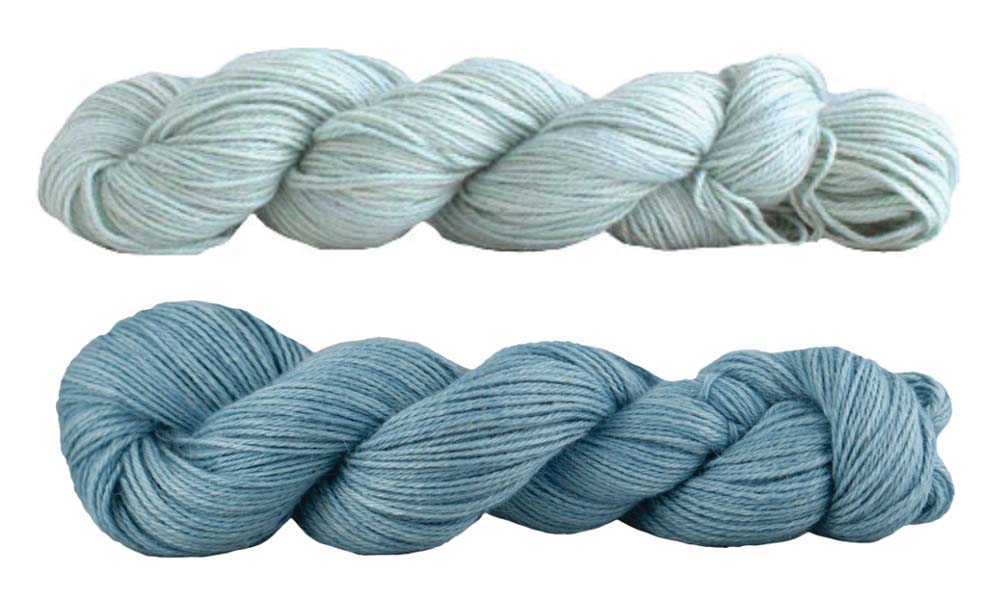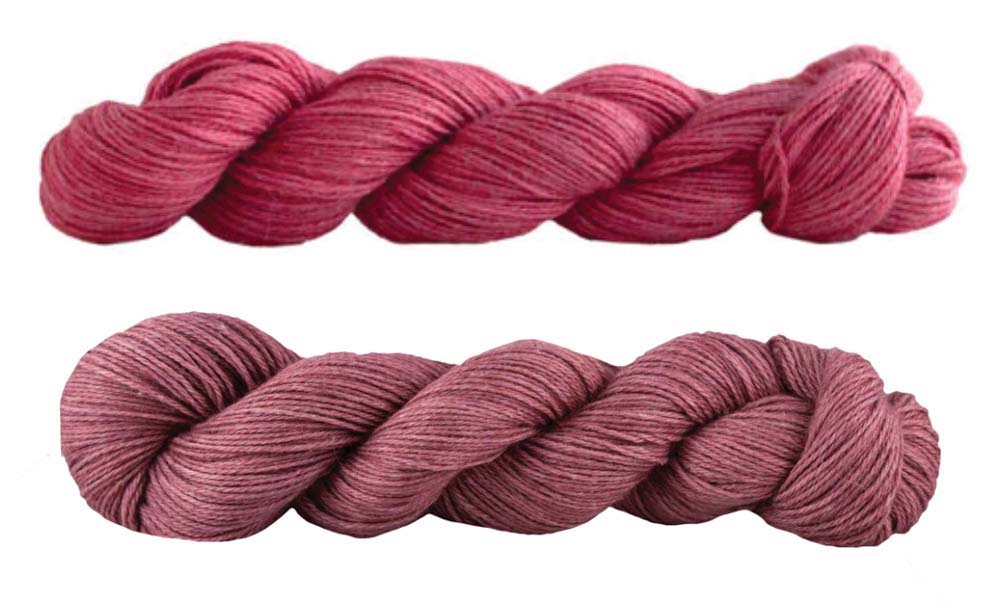Cloud Illusions Tips

On this page you’ll find tips and tutorials for making your own Cloud Illusions cowl. Below are the list of tutorials you’ll find:
- Picking a yarn
- Adjusting cowl for a different gauge
- Working 2 strands together (double-stranding technique)
- Long-tail cast-on & joining to work in the round
- Working the chevron eyelet stitch
Picking a Yarn
The pattern calls for working 2 strands of sport-weight yarn held together, to create a marled affect. I used Manos del Uruguay’s Serena, an alpaca/cotton blend, in the Biscotti/Seashell colorways. Below are a couple of other color pairings that I think could work well in the Serena yarn:
There are lots of other yarn options out there as well – you can either use a similar sport-weight in 2 different complementary colors (as I’ve done above with Serena), or you could consider using a heavier DK-weight and pair it with a lace-weight mohair. For example, you could use Manos del Uruguay’s Milo, a merino/linen blend with Manos’ Cabrito, a lace-weight mohair. Since you don’t need too much yardage, this is also a great opportunity to play around with yarns you have in your stash!
Adjusting Cowl for Different Gauge
Exact gauge is not critical for this cowl, but if it’s dramatically different from the pattern gauge of 19 sts = 4″, then you’ll want to consider casting-on a different number of stitches. Here are some tips:
- Take your swatch’s per inch stitch gauge and multiple it by 24 – then round this number to the nearest number that is divisible by 4.
- Then the only other adjustment you’ll need to make is the number of stitches to knit before placing your first eyelet marker (in the Eyelet Panel Set-up Rnd). To figure out what number should replace the “k18” listed in pattern, do this calculation: Take your cast-on number and divide it by 6 – then round to the nearest whole number.
Working 2 Strands Together (Double-Stranding Technique)
My video tutorial below walks you through the double-stranding technique. If you are brand new to this technique, I also recommend that you first review this blog post.
Long-tail Cast-on and Joining to work in the round
My preferred cast-on is the long-tail cast-on (although you can use other cast-ons if you prefer). Click here to watch my video tutorial about this cast-on, and click here for my tutorial on joining to work in the round.
Working the Chevron Eyelet Stitch Pattern
The eyelet stitch is created using these stitches: k2tog, YO and skp. For photo and video tutorials of this stitch pattern, click here. If you prefer reading a chart of this stitch pattern (rather than reading it written out row-by-row in the pattern), click the download button below for a PDF:




